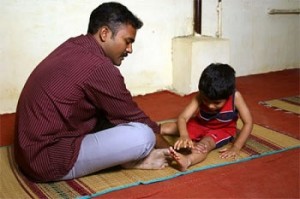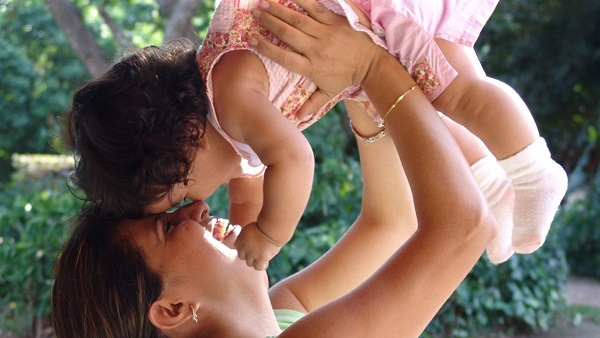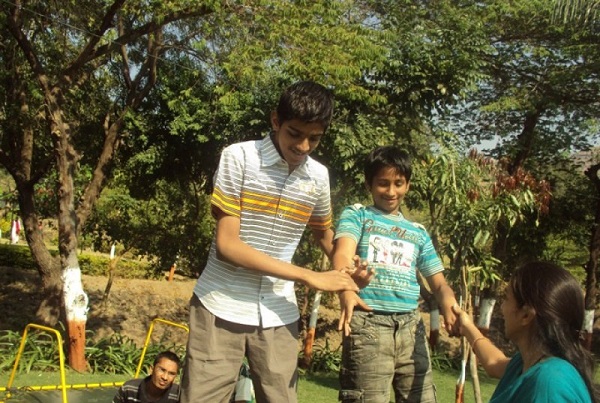Why do children on the autism spectrum sometimes give up something early? Does an underlying lack of motivation cause the problem?
 by Kamini Lakhani | saiconnections01@gmail.com
by Kamini Lakhani | saiconnections01@gmail.com
Part 8 of the Autism Diaries – The relation between motivation and resilience.
In a Skype meeting with a family recently, the discussion veered towards why their son (now 18 years old), did not initiate any activity by himself at home. He did help with the cooking and shopping, but was not motivated to do much else. I was actually wondering, which teenager does even this much in today’s time and age! However, I understood the parental concern. After all, we do want our youngsters to be engaged meaningfully.
The example that mom gave was that if she asks him to find something from a loft up high (he’s the tallest in the family and stands at 5ft 11in!), he tries to look for the item but then gives up if he doesn’t find it quickly. While she was talking, two words flashed in my mind, Motivation and Resilience.
Incidentally, both are interconnected. To do anything, we need to be motivated. To stick with it, we need resilience. They tend to feed into other.
Lack of motivation is a core deficit of autism. How do we help? How can we increase this?
Something that another mother shared with me threw more light on the subject of motivation. She was finding it difficult to engage with her son in an experience-based, real life framework. That is, until he selected something that he wanted to do! He decided to bake shortbread cookies. It was the first time that they had baked cookies together! I saw the video clip of this and I was mesmerized. There were some parts that were difficult for him – such as kneading the dough to the right consistency, rolling out and shaping cookies, etc. But because he was so motivated, he was easily able to learn the difficult skills, too.
Could I use this model at SAI Connections too? How about showing students the bigger picture? They need to know why they are doing what they are being asked to do.
Here is an exercise that we tried:
We thought it would be an experience-based and educational exercise to get all students involved in a group lunch. So they would be involved in the entire experience of shopping for vegetables and ingredients, they would then be involved in the preparation, from chopping to cooking. Finally, they would be responsible for arranging the area for lunch and eating together.
ingredients, they would then be involved in the preparation, from chopping to cooking. Finally, they would be responsible for arranging the area for lunch and eating together.
So how did we go about this?
1. What is the big picture (Why)
Each student was informed by words or pictures about what the final ‘product’ would be. So if they were to be cooking pav bhaji, they were shown pictures of this. They were told that they would all be eating together and that they would all have the responsibility of getting this whole act together.
2. Co regulation and Authentic Roles (How)
Each student had an authentic role in the big picture. By authentic, I mean their role was integral to the process. If they did not complete their role, the exercise could not be completed. For example, if a student did not chop onions, we could not have cooked without that.
3. Respect and dignity
Obviously then, this afforded them the dignity that they deserve. Each and everything that they did was important. Even setting the table, if they did not do it, then one of the helpers would have to do it. Also, by letting them know why they were doing what they were doing, it was a given that they ‘understood’ and we were giving them their due respect.
Amazing results
One of the students went home and told her cook that he needn’t prepare her lunch the next day as she was going to be preparing it at school. Her mother reports that the next day, she woke up bright and early to go to school!
Another student who was responsible for making salad for the entire group, made the salad much more willingly! That particular day, he was even happy to chop onions – something that he otherwise detests!
Yet another student, who has skill issues and cuts vegetables in a slow and laidback manner, got carried away with the whole excitement that was tangible at school that day. His teacher reported that he cut much faster than usual!
By showing them the bigger picture, had we hit the motivation aspect? Again, by using co-regulation as the base of our frameworks, did we make them feel more competent and hence more motivated?
When intrinsic motivation is built, magic happens!
 Here’s how it has affected the life of another family that I work with.
Here’s how it has affected the life of another family that I work with.
Aahan is a 14-year-old boy on the autism spectrum. It’s amazing how building of this self motivation has impacted his life. In his last exam he scored 70 per cent. This exam, his aim is to score 85 percent! His parents report that he has started to study on his own. This in itself is huge, as he is also affected by learning difficulties in English and Math. He wakes up early in the morning to revise. He completes ‘n’ number of revisions during his exam days. He monitors the time that he plays downstairs. He plans for the day ahead. Sure, percentages are external in nature. However, adherence towards achievement of a certain percentage is a purely an internally-driven affair. Aahan’s dynamic intelligence has also gone up to a large extent.
Is motivation that one aspect that leads to all the gears moving in sync?
Is motivation that one aspect that gives meaning to the ‘whole’ and links all the parts together?
If we work without motivation, we could spend a life time dealing with the parts. Add motivation to the mix, and the whole starts vibrating at a much higher level!
Was it Aristotle who said, ‘The whole is greater than the sum of its parts?’
Are you working on increasing motivation in your child’s or student’s life? I would love to hear your motivational stories. Please feel free to write to me at saiconnections01@gmail.com.
Kamini Lakhani is the founder of SAI Connections. She is a Behaviour Analyst, an RDI (Relationship Development Intervention) Consultant, Supervisor and Trainer responsible for RDI professional training in India and the Middle East. She is the mother of an adult on the Autism Spectrum. She is also a member of Forum for Autism.
Next: Does Mumbai really have a heart?
(Pictures courtesy ibnlive.in.com, www.we4autism.org, www.cnn.com. Images used for representational purpose only)






Great post Kamini.
If we keep them in the loop about the bigger picture and give them the dignity they deserve, nothing will stop them from spreading their wings.
Keep up the good work!
Hello Kamini ji
I believe that the autistic children do have the motivation, but the lack of expressions which is one of the core deficits of autism that constrains them from responding. However I agree that we entice them or involve them in activities that push their motivation levels to such an extent that they feel happily compelled to get involved and perform the activities and in turn help evolve dynamic thinking, co-regulation and self regulation.
Regards
Sudarshan
Hello!
Some autistics are so terrified of other people
it is hard to learn in groups